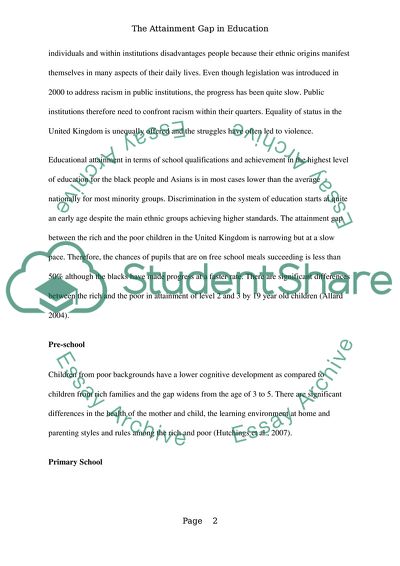Cite this document
(The Attainment Gap in Education Coursework Example | Topics and Well Written Essays - 1500 words, n.d.)
The Attainment Gap in Education Coursework Example | Topics and Well Written Essays - 1500 words. https://studentshare.org/education/1747446-the-attainment-gap-in-education
The Attainment Gap in Education Coursework Example | Topics and Well Written Essays - 1500 words. https://studentshare.org/education/1747446-the-attainment-gap-in-education
(The Attainment Gap in Education Coursework Example | Topics and Well Written Essays - 1500 Words)
The Attainment Gap in Education Coursework Example | Topics and Well Written Essays - 1500 Words. https://studentshare.org/education/1747446-the-attainment-gap-in-education.
The Attainment Gap in Education Coursework Example | Topics and Well Written Essays - 1500 Words. https://studentshare.org/education/1747446-the-attainment-gap-in-education.
“The Attainment Gap in Education Coursework Example | Topics and Well Written Essays - 1500 Words”. https://studentshare.org/education/1747446-the-attainment-gap-in-education.


